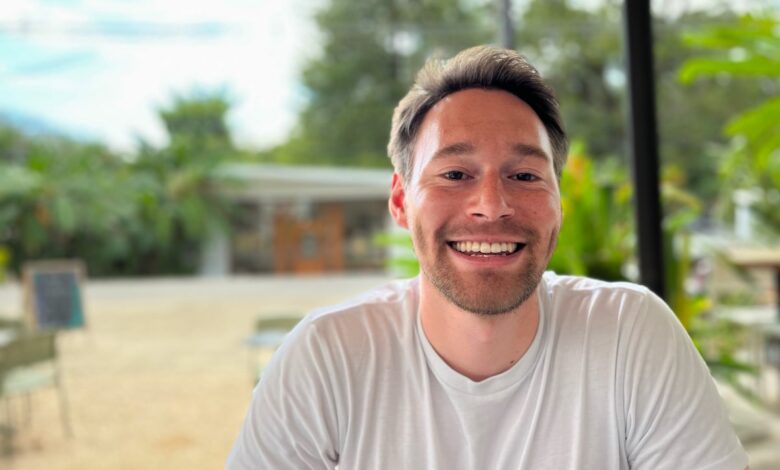More Indigenous entrepreneurs exploring indigeneity through business


Alec Glover opened a co-working space in Chippewas of Rama First Nation after noticing a ‘brain drain’ of tech talent from First Nations communities to big cities.Alec Glover/Handout
When Stephanie Tschirhart moved her in-home beauty salon to a brick-and-mortar location in Kincardine, Ont., she used the opportunity to rebrand from Butterfly Kisses to Kwe Beauty to better express her indigeneity.
Although it’s not a one-to-one translation, “kwe” represents the idea of a woman in Ojibway, says Ms. Tschirhart, who built the business alongside her daughter Emma on the southern banks of Lake Huron.
The two of them are part of a surge of Indigenous entrepreneurs using their businesses as a platform to explore their indigeneity and support Indigenous skills and ideas.
“As an Indigenous entrepreneur, I am able to occupy space today where my ancestors were not able to before,” says Ms. Tschirhart. “I see that as a huge opportunity and a huge privilege.”
And so, for Ms. Tschirhart – a member of the Saugeen First Nation – the rebrand to Kwe Beauty is bigger than just a name. She envisions the salon as a space to host workshops led by elders and other members of the nation, together sharing knowledge and cultural practices with non-Indigenous neighbours.
To her, it’s part of a larger sense of responsibility to be intentional with the work she is doing.
“Being an entrepreneur isn’t what I do, it’s who I am; being an anishinaabekwe – an Indigenous woman – isn’t what I do, it is who I am,” says Ms. Tschirhart. “So everything about who I am, I see as a responsibility to share [and] spread my knowledge and my experience to the ones that are coming after me.”
Slow change in the funding landscape
Across Canada, there are more than 50,000 Indigenous businesses owned by First Nations, Métis and Inuit. Indigenous peoples create businesses at nine times the rate of the non-Indigenous Canadian average, according to the Canadian Council for Aboriginal Business. Statistics Canada also found a higher proportion of Indigenous-owned businesses are held by women (23.2 per cent) than non-Indigenous-owned businesses (19.5 per cent).
But despite the surge in Indigenous entrepreneurship, the group is severely under-represented, accounting for just 1.4 per cent of Canadian SMEs, according to Export Development Canada (EDC). Some of the biggest hurdles to funding include institutional bias and misinformation surrounding perceived lending risks. Canadian companies see loan approval rates around 90 per cent, versus 58 per cent for Indigenous businesses, according to EDC.
At least some of that stems from the fact that First Nations people living on reserves don’t legally own the land they live on, as specified by the Indian Act, so they don’t always have the collateral needed to back a loan, according to EDC. As a result, the majority of Indigenous entrepreneurs (65 per cent) rely on personal savings to start a new business, while their white male counterparts typically receive institutional funding.
Slowing the brain drain in remote areas
Resources are also an issue when it comes to building on-reserve business.
Business networks and financial support tend to be concentrated in larger city centres, far away from remote Indigenous communities. Skills often follow suit, says Alec Glover, an Ojibwa systems engineer working remotely for Dell.
“There’s a brain drain in reserves where [Indigenous] people get educated, they grow up and end up in really good careers that take them away from the community,” he says. “[Many] of the professionals that would normally be role models within that community are often in Toronto, Calgary, and Vancouver – these big business hubs – doing their thing.”

Business development manager Kyle Matthews (left) and Chief Ted Williams (right), both of Chippewas of Rama First Nation, worked with Glover (centre) to open up Anokii Coworking last year.Alec Glover/Handout
To help reverse that trend, Mr. Glover founded Anokii Coworking on the northeastern edge of Lake Simcoe in Chippewas of Rama First Nation.
Although he says his heritage is rooted in Batchewana First Nation, he grew up in Cobourg, near Toronto. Because of Rama First Nation’s proximity to Toronto, Mr. Glover saw its potential as a meeting place for Indigenous entrepreneurs. He approached local authorities with the idea to set up a co-working space for Indigenous entrepreneurs, and in 2022 Anokii was born.
Since then, Mr. Glover has slowly been recruiting a small stable of entrepreneurially minded Indigenous people with diverse skillsets to work in the space. “It definitely brings a lot of opportunity back to the community, and that’s something that I see snowballing,” he says.
Newer economic incentives and tendering processes, such as the federal requirement mandating at least five per cent of the value of federal contracting goes to Indigenous-owned businesses, are helping create new paths to entrepreneurship.
“There are billions of dollars of opportunity with the federal government to start little businesses and do all this public work, and there’s a ton of people that are going to surround that,” says Mr. Glover.
Raising up the community
Anokii is Mr. Glover’s way of bolstering the local Indigenous economy and creating ways for Chippewas of Rama First Nation members to connect and organize mutual support.
“We just have such a diverse group of people and skillsets that are also willing to support each other because we all have that one thing in common – which is an Indigenous background,” he says.
Ms. Tschirhart agrees, pointing out that increased access to funding and grants to support Indigenous businesses are opening doorways to explore business ideas, like beauty, through an Indigenous lens.
“I get to show my kids and my relatives and my people, ‘Hey, look at what we’re doing, we can do this, there is space for us too,’” says Ms. Tschirhart. “We just have to be a little more strategic about finding that space and navigating it.”





